The Royal Navy is moving forward with ‘Project Vampire’, a plan to procure low-cost fixed-wing drones for intelligence, surveillance and reconnaissance in addition to electromagnetic operations and threat simulation.
According to the contract tender notice, the outline of the project is as follows.
“Project VAMPIRE sits within the Develop Directorate of Navy Command and aims to address a number of capability problem sets utilising a low-cost Fixed Wing Uncrewed Air Vehicle (UAV) as a means for the development of operational concepts, payload types, and associated communication and digital architecture.”
According to the contract tender notice, Phase 1 of project Vampire will run as a 4 year project with an option to extend by 1 year until 31 March 2026.
The project is being contracted to deliver the following:
- Four Air Vehicles (In Royal Navy livery as agreed with the authority), with one additional per year in 2023-24 and 2024-25, with options to purchase up to 10 more and an option to extend the contract until 31/03/2026.
- One Launcher with options to purchase up to 2 more.
- One ground control station and aerials, with options to purchase up to 2 more.
- Training for operators in 2022-23, with a repeat in 2024-25.
- Maintainer training for first-line servicing in 2022-23, with a repeat in 2024-25.
Key Specifications
- Max operating altitude more than 35,000ft AMSL
- Sea Skimming operations Min operating altitude below 50ft ASL
- Min operating altitude below 20ft ASL
- Operating speeds Speed more than 250m/s
- Manoeuvrability up to 9G
- Low observability Desirable for IR, and NATO frequency bands C – K
- Payloads including tracked, guided, or fused weapon systems
- Flares, IR, and Chaff dispenser
- Payload bay capabilities between 25Kg and 100kg
- Endurance with a full payload of 1 hour.
- Suitability for maritime environments (salt ingress, deck mobility)
- Air Vehicle to be equipped with IFF (modes 3/A and C) and ADS-B.
- Remotely piloted option.
- The air vehicles shall have an agreed paint colour scheme (DAP 119A-0601-08) and display Royal Navy and UK national markings and serial numbering.
This follows the demonstration of drones onboard HMS Prince of Wales last year. HMS Prince of Wales has launched jet powered drones from her flight deck as the Royal Navy started to explore the use of crewless technology on the Queen Elizabeth-class aircraft carriers. It is understood that the demonstration with HMS Prince of Wales looked at how the drone and associated support equipment, including launcher, can be integrated within a busy ship and flight deck.
Banshee drones were launched from the ship and recovered to land via parachute.
According to a news release here:
“Fixed-wing drones – called the QinetiQ Banshee Jet 80+ – flew from the carrier’s vast flight deck to assess how they might be used to train personnel in defending against ever-more-capable fast jets and missiles. The jet-powered Banshee, which looks like a mini fighter aircraft, can soar to 25,000ft, skim just above the waves, and flies at speeds up to 400 knots (around 460mph). It is hard to detect on radar, giving it all the likeness of an incoming missile – making it a realistic adversary for sailors to train in countering aerial threats.
These drones could eventually be carried by Royal Navy warships and provide operational training to task groups wherever they might be in the world, allowing them to conduct air defence exercises on demand to test reactions and hone responses. And the Banshee’s carrying capacity means the Royal Navy can use it for testing future sensors, weaponry and radio equipment.”
Drones on the carriers?
Alongside the above, carrier-based drones under ‘Project Vixen’ are also being considered for a range of missions including combat, aerial refuelling and airborne early warning but what could they look like?
According to an official Royal Navy publication, titled Future Maritime Aviation Force, which was originally published in December 2020, the Royal Navy aims to replace its helicopter-based airborne early warning (AEW) platform, the Merlin HM2 Crowsnest, with a fixed-wing UAV, currently known as Vixen, by 2030.
The Royal Navy also expects to utilise Vixen in surveillance, air-to-air refueling, electronic warfare and strike roles. A slide from the publication shows that Vixen could be used for airborne early warning, strike, aerial refuelling and more.
You can read more about the aerial surveillance side of things by clicking here and the aerial refuelling aspect by clicking here.


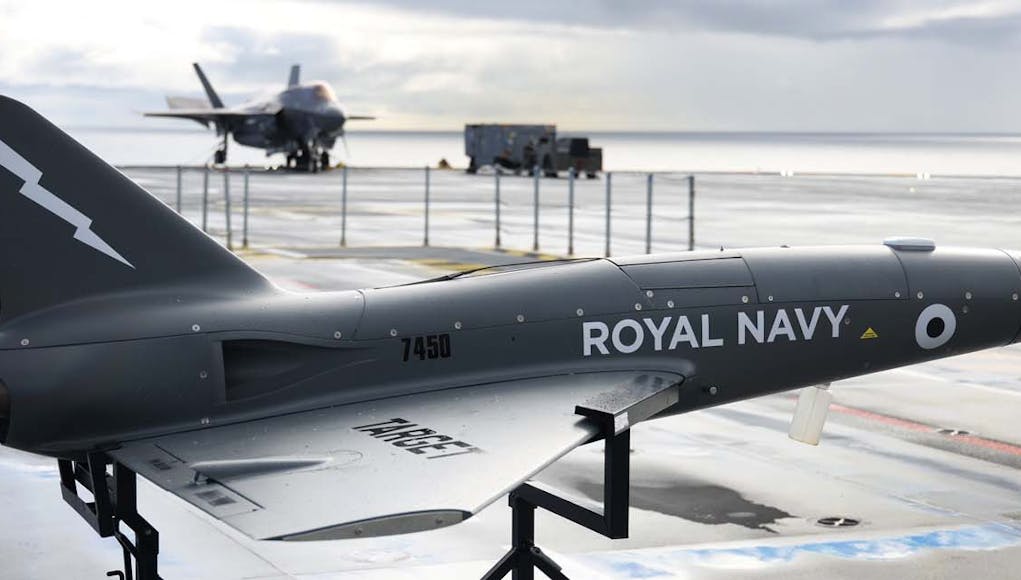
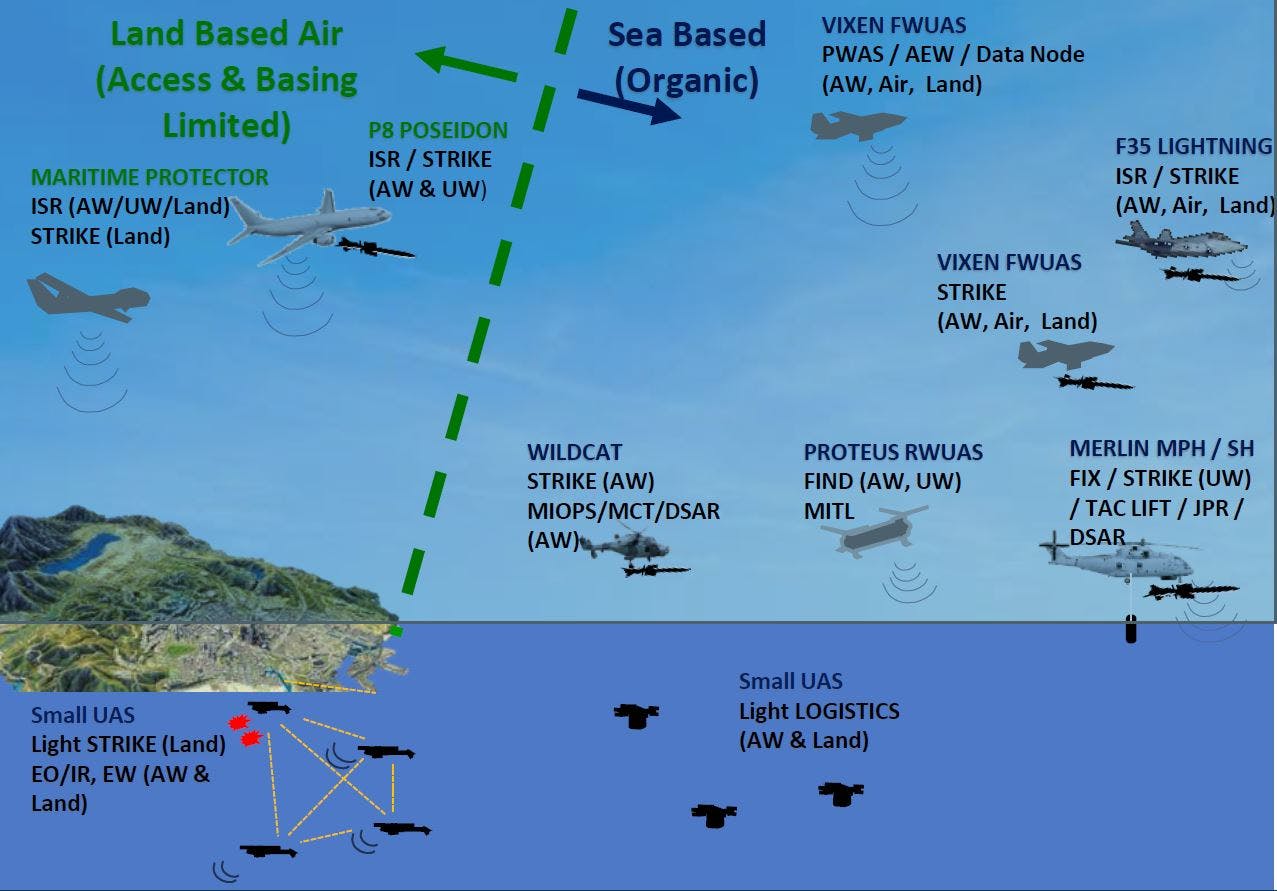
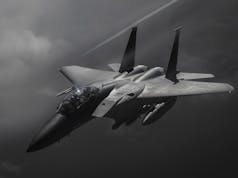

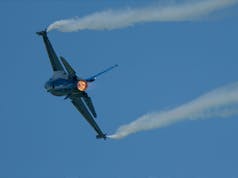
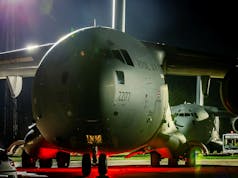
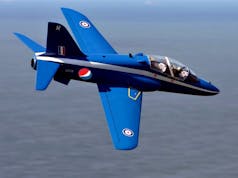
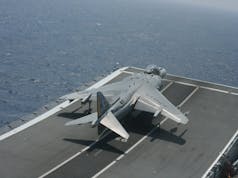
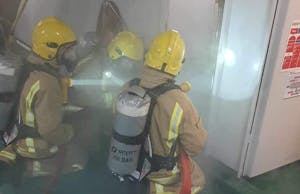









A good idea – ‘low cost’ drones have been very successful and about time UK aquired this capability. I hope the RAF and Army are watching.
The Army have had drones for years. Desert Hawk 1-3 used extensively by the Army in Iraq and Afghanistan. Black Hornet, a mini helicopter drone for light role inf troops, and then Hermes 450 used by the Royal Artillery, to name the most well known.
None of those could be described as ‘low cost’ however.
Without getting into the weeds, both the Desert Hawk series and Black Hornet were and are low cost. (Check Google if you don’t believe me, it is open source information). The Hermes seems similar to the Vampire in both size and cost.
Black hornet was around 20k a piece and it was utter shite.
We lost loads in no more than a light gust and they eventually went back into the CQs along with all the other good ideas at the time.
Still, they’re good to take pics of for Soldier magazine to show how we’re at the forefront of tech (demonstrator only).
Nothing in the tender notice of being able to recover the drones back to a ship from which they launched. Would seem that rapid reusability is the key benefit over single use loitering munitions.
Yes, they are designed for being reusable (seem a bit expensive for single use with countermeasures and everything) but I believe they are recovered by parachuting over land so I’m not sure how this will help when sailing far from allied land and nearer the coast of enemy territory, like a carrier often does.
I understand they’re just fished out of the sea, they float. The engine is flushed out and then they’re re-used
I know not the same kind of capacity as this by but would be interesting to see if General Atomics Unveils New ‘Mojave’ Drone with 16 Hellfire missiles – YouTube this could be used off the carrier it has good STOL. I think this is closer to what Vixen is looking to achieve, but IP and other issues may make it difficult to use though it is “off the shelf” and we already use the same family of drone types in the RAF so similar training as already exists. if you are sailing into the wind and with maybe some… Read more »
It’s already been tested for such use but it ain’t cheap. We can only afford 16 of the standard protector/sea guardian but agree this would fill alot of the RN is looking for except the made in Britain stamp. The only thing missing is the AWE payload. If they can make one that can fit into a mission pod and have multiple mission pods that can easily be swapped they on for a winner. They are developing the pods so watch this space. There is no reason we could fly these of QE and POW except for an emergency trap… Read more »
“The only thing missing is the AWE payload.”
Don’t think we will use them to drop nukes 🙂
🤣 why not at least it will be an anti ship weapon of use…. Airborne Early Warning pod thou would be beneficial.
Listening to the video the Mojave could take off from a QE deck already, just not with much of a payload. People are also getting too hung up on the Banshee proof-of-concept. That was never designed to land on a carrier, that’s why it had to parachute to land. Depending on the lift characteristics of the drone, its size and engine power, and the sophistication of the avionics, it’s possible it might be able to land on a flight deck automatically without a trap. (It’s been shown rockets can land themselves into much smaller targets in the ocean – a… Read more »
I know the video you refer to but they give the take off distance at over 1000′ so’ll probably need a cat and trap.
Still from the video I think QE are max 920ft, plus ramp, plus into the wind? you may not get 12 helfires buut 8 or 6 still a good load. But yes some sort of trap or a emergency barrier arrest would also work given that it is pushed by a propeller at the back.
The advantage of being fished out of the sea is also they can be recovered i higher sea states.
Maybe ok for just a target drone but don’t suppose the tech they’re expecting to load on them would take too kindly to regular dunkings.
I hope the cost does not escalate like most procurement programmes. It should be interesting to see the final design.
Not sure about that, however, what will be interesting will be seeing the final invoice 😉
Will it only be recoverable by parachuting onto land? Recovering from the sea could be tricky but it’ll seriously constrain usability if not.
Dimensions wise will it only be able to launch from the carriers or might the Royal Navy be looking at deploying them on other surface vessels?
The River’s in particular really need a small/cheap UAV for routine surveillance work.
Looks like they will use these to replace Hawk in the threat simulation role, but also to test weapons and payloads and develop CONOPS for Vixen.
Not sure why we stopped using Scan Eagle’s or newer RQ-21 they would provide any ship from Rivers up with area surveillance?
The equipment footprint for scan eagle, not including the upper deck data link domes, is around 2 X 20ft ISO containers. Add to that it’s 3 or 4 civvie operators who need beds and it’s a big logistical impact.
The RN is looking at doing a system with less of a logistical impact.
Thanks GB, i didn’t realise needed so much kit for little drone. perhaps capability/ facilities will be included in t-32 design too late for T-31
Nice too see the MOD going Retro of the 50ts with those project names Vampire and Vixen a nice bit of FAA nostalgia
That’s actual a really significant set of capability requirements,no less that 250mps, manoeuvrability up to 9g, sea skimming to 35,000 feet, ability to deploy weapon systems, sensors, low radar cross section, one hour endurance at full payload, full self defence suite.
Thats not a cheap off the shelf system target drone like banshee, its a step change cutting edge system.
I’m not seeing a range. Have I missed it?
No they don’t seem to have specified a range, just endurance time, but if your looking at 250mps+ and 1 hour endurance your looking at around the 250-300 mile combat radius mark with some loiter time, unless it’s a one way thing ( which I suppose you could do if needed ).
Hi Jonathan,
You are right to say this is not Banshee this is a pretty capable little beastie.
However, there is no mention of landingn back on the ship and they do mention a ‘launcher’ so something akin to a scaled up Banshee. I also go the the impression from the opening phrasing that it was another trials platform, only far more capable than Banshee.
I also got the sense that they have their eye on something already 🙂
I guess we’ll find out over the next two or three years.
Cheers CR
Yes I’m really looking forward to see where the RN is going with Autonomous vehicles and capabilities, we seem to be hitting a point of significant evolution in navel power.
To answer your question, see the attached link:
https://www.qinetiq.com/-/media/4d839d3cdec04ea09d54557bbfa28e3e.ashx
Cheers Davey, interesting link, yes it does seem a lot of the requirements are close to this new drone.
The specification requirements look like the Banshee NG. See link: The Banshee NG New Generation Aerial Targets by QinetiQ Significantly faster and can operate at lower or higher altitude, this seems to be what the RN have in mind. It has an incredibly low RCS for a target drone, that needs to be boosted to “normal” levels by multiple Luneburg lenses. Perhaps it will be starting off by testing the Navy’s air defence capabilities. But it could also be used to test others! You can bet, when they were using the Banshee 80+, that it was trialled for teaming up… Read more »
is this a cheap version of a harpoon?
Nah, purely to be used for target practice and perhaps sorting out the concept of operations around using an unmanned aircraft from the carrier. However, you could quite easily weaponize Banshee. If Hamas, Hezbollah and the Houthis can do it to commercially available drones, I’m sure we could? It will need a primary sensor such as imaging infrared or millimetric radar. Presently it can only be controlled via command guidance or flown via waypoints, so won’t be able to “see” the target. Even a Go-Pro camera can be used, with it linked up to a two-way data-link, but that would… Read more »
All well and good but will they have a 4.5 or 5″ gun 😉
I Realise that the R on carriers stands for Recovery but not by Seaboat, can the designers place a skid type of plate that enables a deck landing with a catch net put in place when banshees are operating ?
I think a catch net/crash barrier is definitely on the cards, if we consider the MoD’s RFI they posted last year. The Banshee 80 uses a composite fuselage and wings. Which could be protected with sacrificial skids. Though this might actually damage the deck. You would need a redesign to include retractable undercarriage, which would be the best solution. I don’t see why its’s not doable and it has many advantages over a parachute recovery.
Thanks Davey , you would think those in the know would realise Salt water and airframes don’t go together unless the catering department on board has ample supplies of Rice I know a lot of thought has gone into the capabilites of this brave new world of UAVs but miss the logical aspects of using and caring for new equipment I think the people who created these vehicles, are the same people who build Boats in their basements if you get my drift
Instead of glorified crash landing or recovery from water via parachute maybe parasail (+ lift < lower speed) and it could be guided at a lower speed to nets etc. Maybe even on ships smaller than carriers. Limited weight penalties too over current chute?
I am following very closely the Jetoptera program. They are basically trying to produce a VTOL taxi, but also small drones and short range passenger aircraft. But unlike the others in its peer group, it does not use any tilting rotor blades for VTOL thrust. It combines the coanda and augmentation effect. These are based around Bernoulli’s theorems of fluid dynamics. Think of it like an upscaled Dyson bladeless fan. See below link: Jetoptera | Revolutionary Propulsion System The principle is really cleaver. Have high pressure air blown along a surface which causes a low pressure area above it. This… Read more »
A magnetized panel and magnets on the wheels to help it stop? 🙂 A bit like those things you get in supermarkets for trollies 🙂
Waitrose or Tescos 😀
250m/s or , 9G can’t be cheap.
It will be efficient to present realistic goals.,
https://www.appliedaeronautics.com/
cheap one : commercial drone
expensive one : bayraktar bt2
but RN’s gaols are more expensive or more.
Well if they are going to recover it by Parachute, they may as well give it airbags and rename it Phoenix. I mean what could go wrong……..
Good idea. Get it to flip upside down just before landing and ur sorted.
Back to the topic this is called project vampire. And there’s also project vixen? 2 separate things. I don’t see vampire on the graphic thing they put out in 2020. Definitely a good idea to get a better feel of things and push the envelope. I imagine production could be scaled up pretty quickly if needed as well
Just have it on a long piece of string and yank it in when finished playing with it worth a try cheaper than a parachute , thick gloves should be worn rope burns LOL
OT F-35 crashes in Carl Vison The F-35C Lightning II, which is assigned to Carrier Air Wing 2, was conducting routine flight operations in the South China Sea when the mishap occurred. The plane’s pilot “safely ejected” and is in stable condition, according to a Navy release. Seven sailors were injured, with three sent to a medical facility in Manila, Philippines. Those three sailors are now in stable condition. Four sailors were treated aboard Carl Vinson and three of them have been released. The mishap, including the cause, is under investigation. The Navy did not provide details on the status of the… Read more »
Called a “landing mishap” in USNI News, let’s hope they won’t have to fish the plane out of the South China Sea. At least it sounds like everyone who was injured will be okay.
Confirmed it went overboard. So one more F-35 to fish.
In theory, could they not design a drone based on a improved harrier V/STOL design. Using catapult launch and recovery by sky crane as it hovers.
For use on smaller ships with out a large flight deck.
All the ideas were there for the original harrier, but now it could be unmanned.
A parachute recovery into the sea is not beyond the wit of man. A 300kg Sting Ray can be recovered by a Wildcat helo as an underslung load using a special to type recovery strop fitted to the torpedo by a Diver deployed from a ships boat or the helo itself Onboard Electronics are something of an issue but equipment and connection plugs are easily made waterproof. The RN has benifited greatly from the North Sea Oil industry which when it all started, commercially drove making things work underwater far better (and cheaper) than the RN ever had. Always remember… Read more »
Indeed. Some of the more recent ROV stuff has RoVs sitting on the seabed thousands of feet down for days and weeks at a time with battery systems being trickle charged via docking stations on the seabed and the ROV often being piloted remotely from land. Robust and hugely reliable subsea electronics.
Seems like this is a very early experiment for the RN, mostly learning about the logistics, processes and workflows of using uncrewed aircraft in proximity to crewed ones. You have to start somewhere.
A parachute/sea recovery has something to recommend it in that the drone does not have to be strengthened for landing gear and the payload is not reduced due to the extra weight. Recovery does not use up deck space and is safer for the carrier. Recovery is also independent of hard manoeuvring to avoid the Hypersonic missiles bearing down, in numbers of course.
I am sure the gear inside the drone can be waterproofed with sandwich boxes.
It does sound like the spec was issued to cover the Banshee NG aircraft…?
AA
So if I’ve understood correctly, the RN are repurposing the Banshee NG target drones as testbed platforms for other technologies such as ISR. Is the idea that these technologies will be ported to Vixen, or might Banshee itself become the final platform for non-catapult equipped ships that can take a 16m launcher instead?
A pitifully small commitment and a ridiculously long development/deployment time. Our carriers lack F35B’s, surveillance, air to air refuelling and electronic warfare capabilities NOW.
I was thinking that. Called Vampire because maybe like an early scheme ( c.1948 ) for landing an actual de Havilland Vampire on deck. Which scheme involved arriving on deck on an huge inflatable cushion like you might take camping with Lilo Lil ! I jest not. Look forward.
I imagine a huge bouncy castle would go down well with the crew and entertainment officer. Particularly now they have bouncy lumpy jumpers onboard.
I’m glad that the RN are working on drone capability, and I know that this has to start somewhere. I also very much approve of utilising historic names for the projects. But I am a bit disappointed that Vampire has been used for one of these earliest developments; it’s too good a name and should have been saved for at least some kind of stealth AEW airframe, if not a UCAV!
Worry ye’ not. They can still call the UCAV a Death Vampire.
What’s the status of the Taranis project? Seems like it had a large PR push years ago and since then really nothing.
Looks so like a V1, yes?
Interesting just read that as part of the latest US support package for Ukraine is funding for the supply of ‘British Vampire Drone System’. I didn’t think that there was anything to supply even if this package is for medium term military term support. Interesting development mind, I wonder as and when it will be supplied and what it will be used for esp if the use off of ships is considered. ‘US officials said it would include money for small, hand-launched Puma drones, the longer-endurance Scan Eagle surveillance drones, which are launched by catapult, and, for the first time,… Read more »